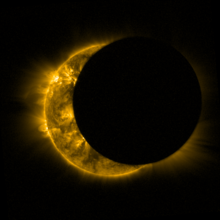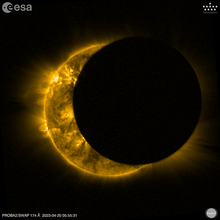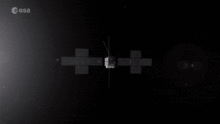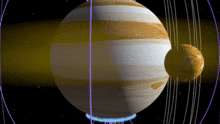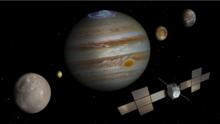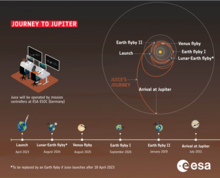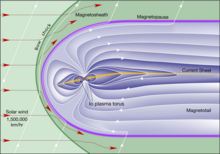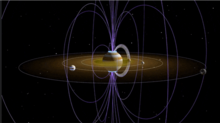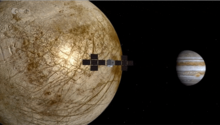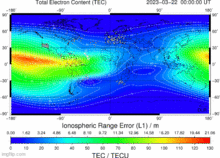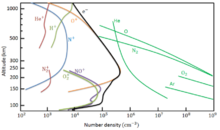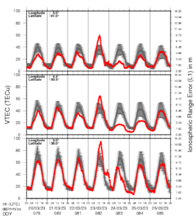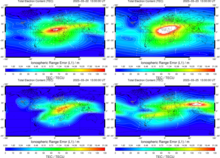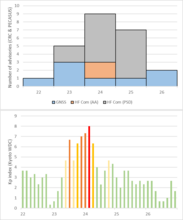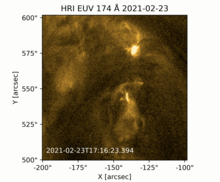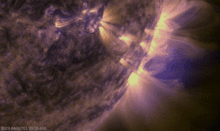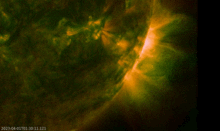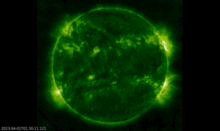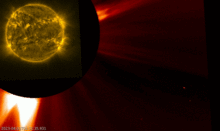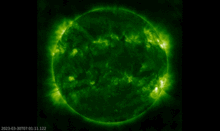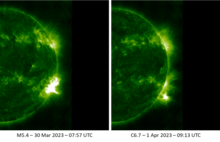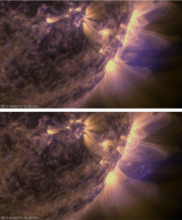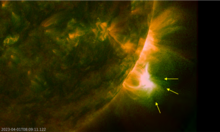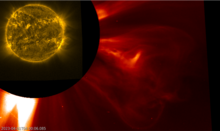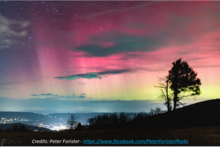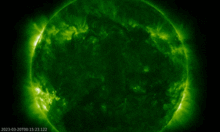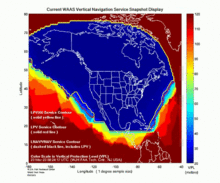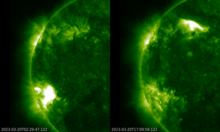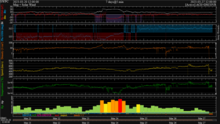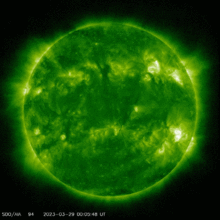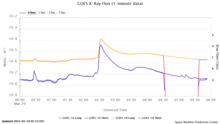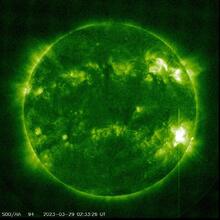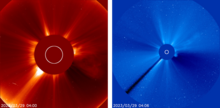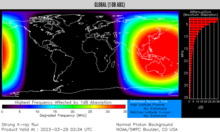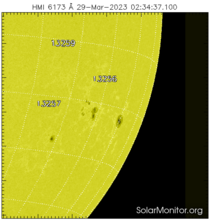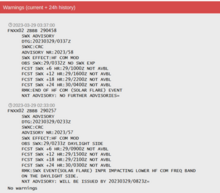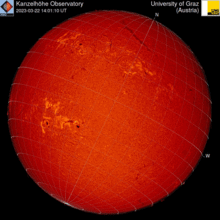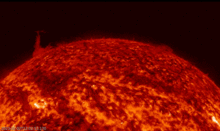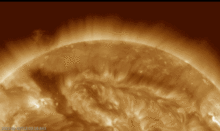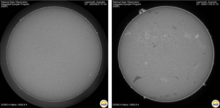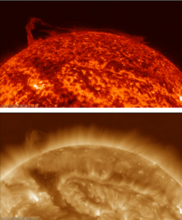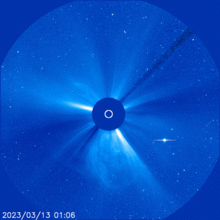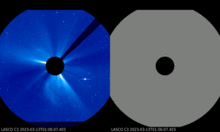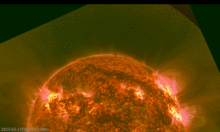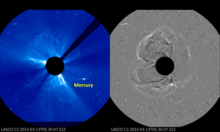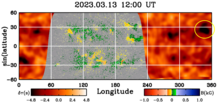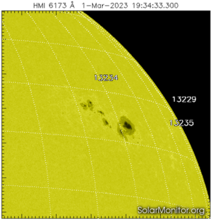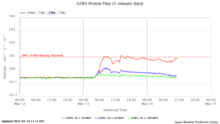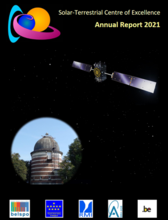news
Submitted on 2023-04-21
In the early hours of April 20 a solar eclipse took place. Regions on Earth that saw, at least, a partial eclipse include parts of South/East Asia, Australia, and Antarctica. This meant that only a very small fraction of the world's population was able to witness this event. Even if it was a difficult eclipse to observe from the ground, PROBA2 had a front-row seat!
Submitted on 2023-04-19
On 14 April, ESA's Jupiter Icy Moons Explorer (JUICE) was launched on an 8 years journey to Jupiter to study the giant gas planet and its three large ocean-bearing moons.
Submitted on 2023-04-12
Following the severe geomagnetic storm of 23-24 March 2023, the positive annd negative phases of the associated ionospheric storm as well as the related space weather effects were clearly observed.
Submitted on 2023-04-06
The Extreme Ultraviolet Imager aboard Solar Orbiter was able to observe magnetic loops that shake back and forth very quickly. Scientists suspect that it is these movements that heat the environment around the sun to millions of degrees Celsius.
Submitted on 2023-04-04
A number of eruptions occurred on 29-30 March and 1 April near the southwest solar limb.
Submitted on 2023-03-29
A severe geomagnetic storm was recorded on 23-24 March.
Submitted on 2023-03-29
An X1.2 flare erupted from active region NOAA 3256 early on 29 March.
Submitted on 2023-03-22
Solar prominences are migrating towards the solar poles, heralding the reversal of the polar magnetic fields within 1 or 2 years.
Submitted on 2023-03-14
Early on 13 March, a strong eruption occurred on the Sun's farside.
Submitted on 2023-03-13
The STCE Annual Report 2021 is now available online.
Pages
Zircon - This is a contributing Drupal Theme
Design by
WeebPal.


